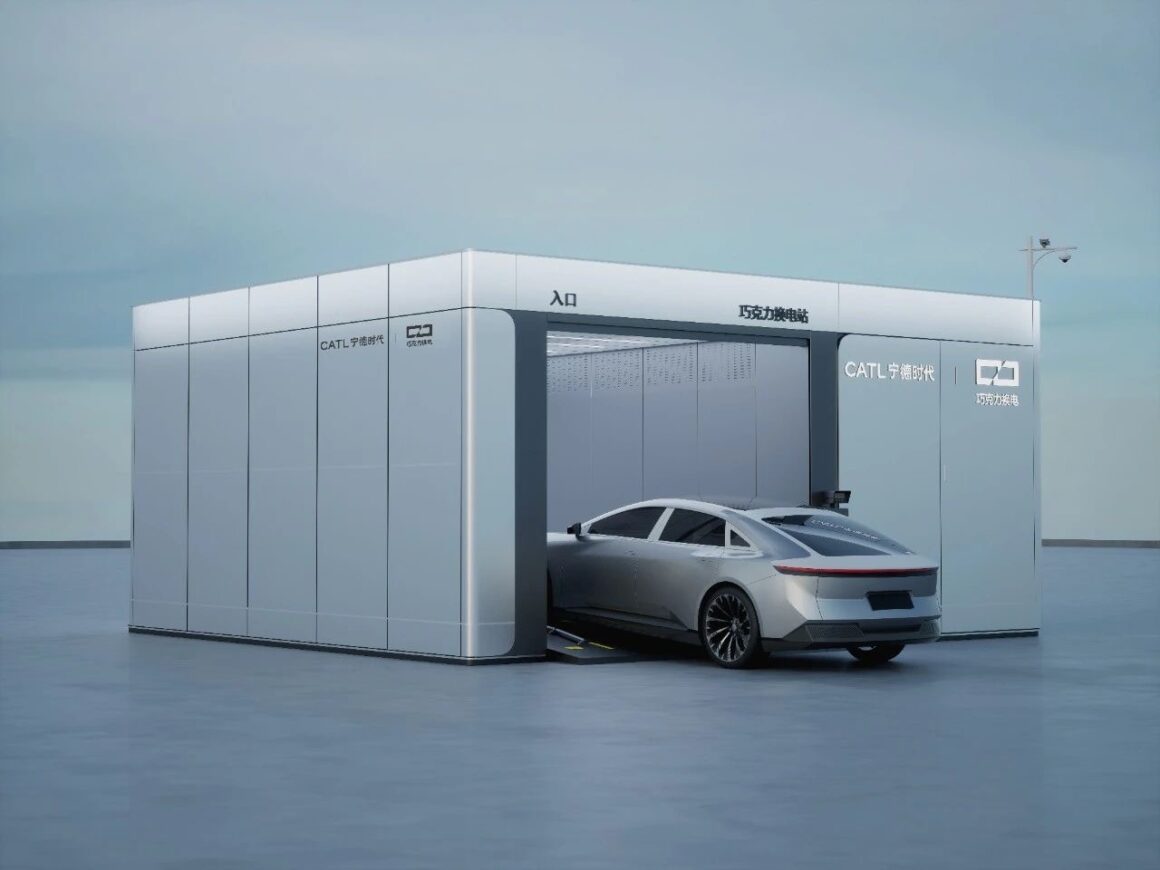Chinese new energy behemoths CATL and Nio have announced a strategic partnership which promises to deliver the world’s largest battery swapping network for electric vehicles (EVs).
CATL, the world’s leading battery manufacturer, and Nio, a leading Chinese EV automaker, signed the agreement this week which not only sets out a plan to create the “largest and most advanced battery swapping service network for passenger vehicles” in the world, but also promotes the standardisation of industry technologies.
While CATL boasts partnerships with some of the world’s most recognisable automakers – including BMW, Hyundai, Honda, Tesla, Toyota, Volkswagen, and Volvo – its batteries are also used extensively throughout its home market of China.
Nio is already one of CATL’s largest EV battery customers, though it has existing supply agreements from other battery makers such as BYD. Nio’s importance to this new partnership is its battery swap technology, which it operates as part of a Battery as a Service (BaaS) program for its cars.
Late last year, Nio surpassed 60 million battery swaps in China, only four months after it had passed the 50 million mark. At the time of writing, that number has continued to grow, and sits close to 69 million swaps in China alone.
Nio has also began expanding its battery swap stations into Europe.
CATL also launched its own battery swap network late last year, with a goal to build 1,000 battery swap stations in 2025 and expand into Hong Kong and Macau.
The CATL “Choco-Swap” network was launched in collaboration with nearly 100 partners and included two standardised battery models – a 42kWh LFP battery offering a range of 400km, and a 52kWh battery delivering a range of 500km. (CATL did not explain which testing procedure these ranges were based on, but we can assume it was CLTC.)

CATL and Nio will therefore strengthen the sharing of their battery swapping networks, with CATL supporting Nio in the development of a large battery swapping network as well as providing its Choco-Swap technical standards and network for introduction into cars developed under Nio’s newly launched sub-brand, Firefly.
The CATL and Nio battery swapping networks will operate in parallel in an effort to offer EV users “a more seamless and efficient swapping experience”.
Additionally, the two will also pursue capital cooperation, with CATL moving forward with an investment of up to RMB2.5 billion into Nio Power, Nio’s battery swapping business.
“The strategic cooperation between Nio and CATL marks a pivotal moment, propelling battery swapping into a brand-new phase,” said William Li, Founder, chairman, and CEO of Nio.
“With the support from CATL, Nio’s swapping network will extend to more regions and provide better services. This cooperation is beyond capital investment—it facilitates mutual empowerment in technological standards and service systems.
“Nio has maintained an open approach in fields such as charging and swapping network and battery asset management, aiming to bring the ‘Chargeable, Swappable, Upgradeable’ solution to a broader user base and accelerate the transition of the automotive industry towards green and low-carbon development.”
The two companies will also jointly drive the formulation and adoption of national standards for battery swapping technology in China and establish what they describe as “a complete lifecycle loop” that includes battery research and development, swapping services, asset management, reutilization, and material recycling.
“CATL has always been committed to driving the global energy transition,” said Robin Zeng, founder, chairman, and general manager of CATL.
“This strategic partnership with Nio Power marks a milestone in collaborative innovation across the entire value chain.
“Leveraging our Choco-Swap and the parallel operations of both CATL’s and Nio’s networks, we are able to build a smart power network that caters to a wide range of needs across multiple levels and dimensions.
This will enable every battery to deliver greater value throughout its lifecycle, and allow us to provide global users with safer, more efficient, and more sustainable electric mobility solutions.”
Joshua S. Hill is a Melbourne-based journalist who has been writing about climate change, clean technology, and electric vehicles for over 15 years. He has been reporting on electric vehicles and clean technologies for Renew Economy and The Driven since 2012. His preferred mode of transport is his feet.

